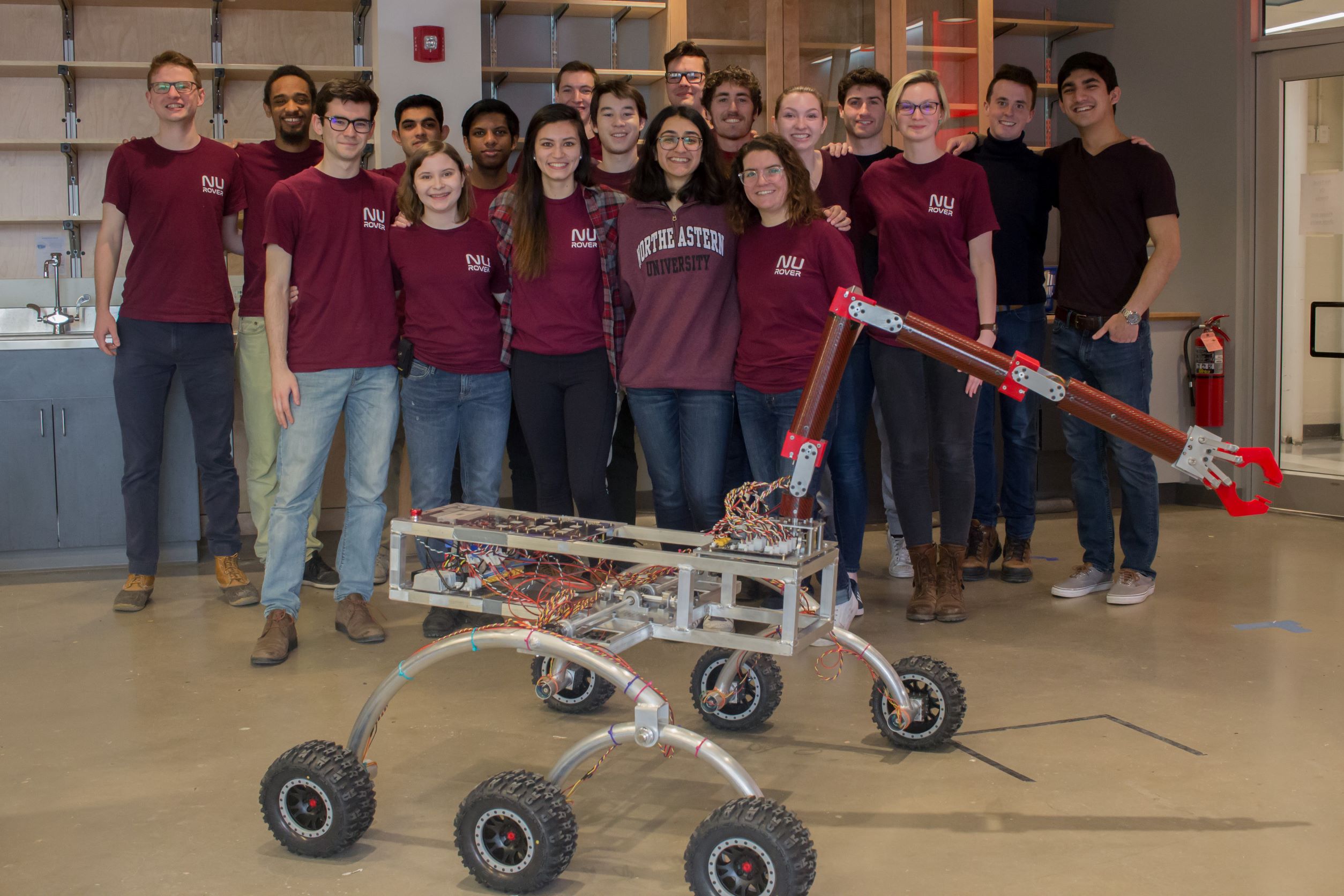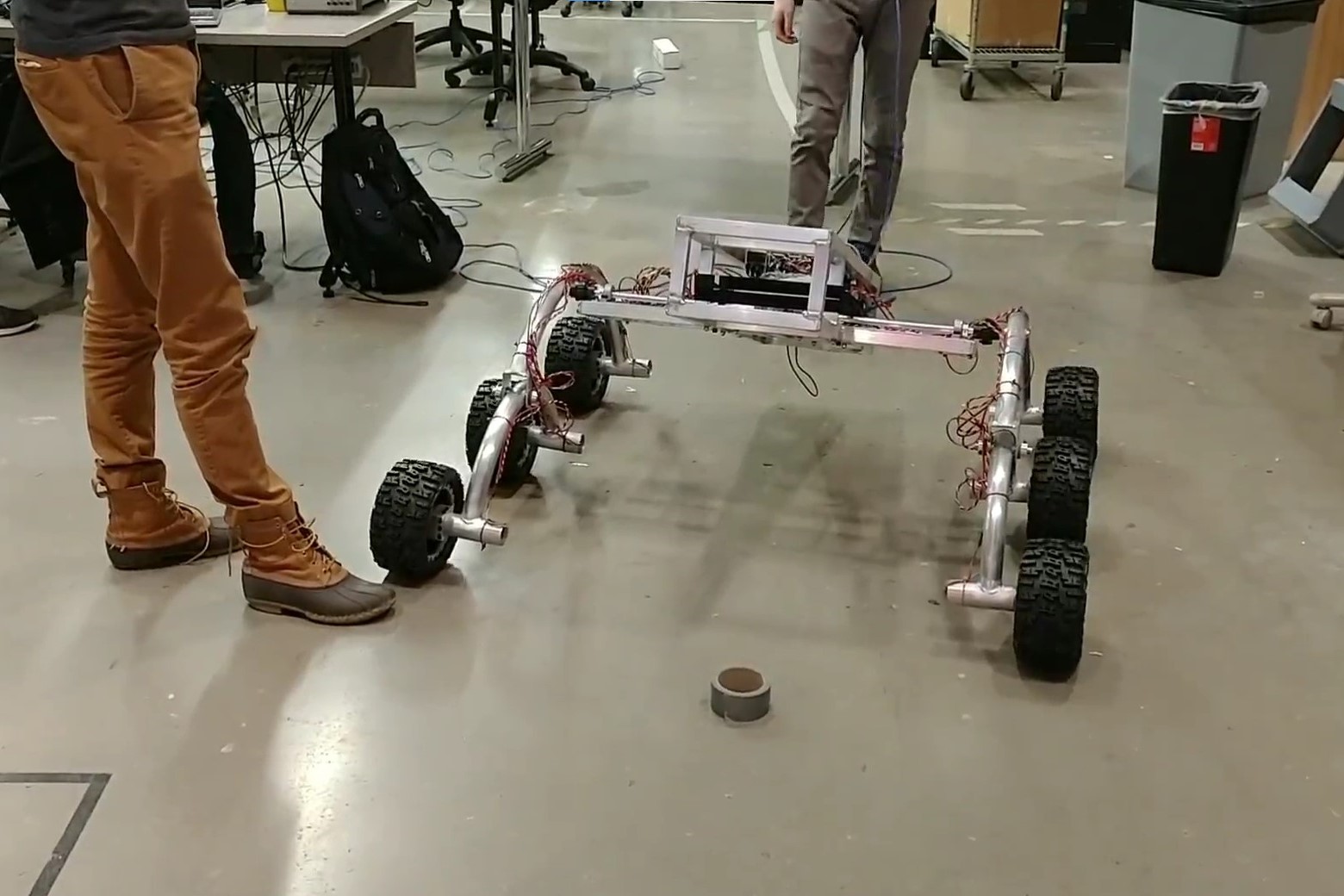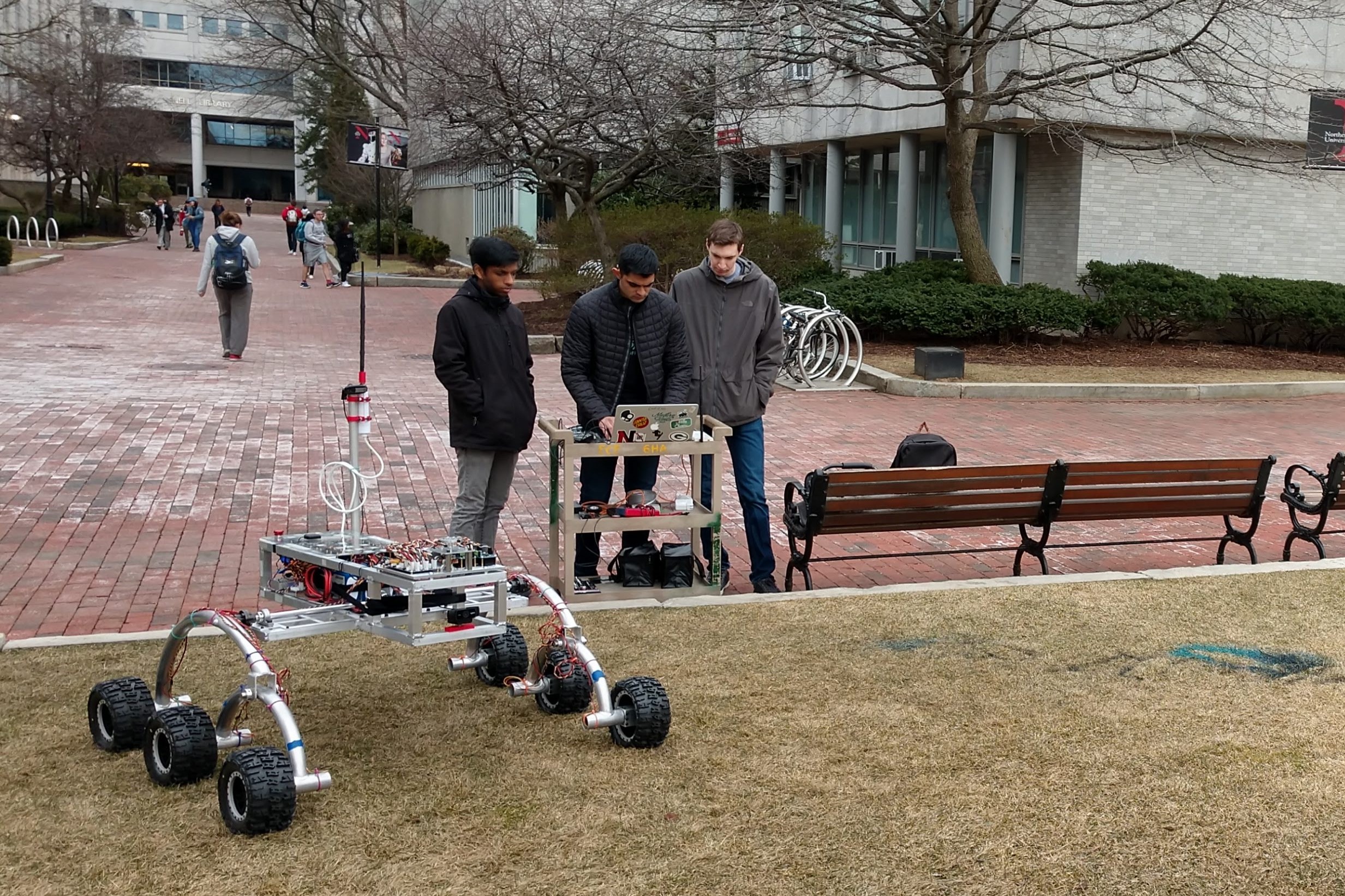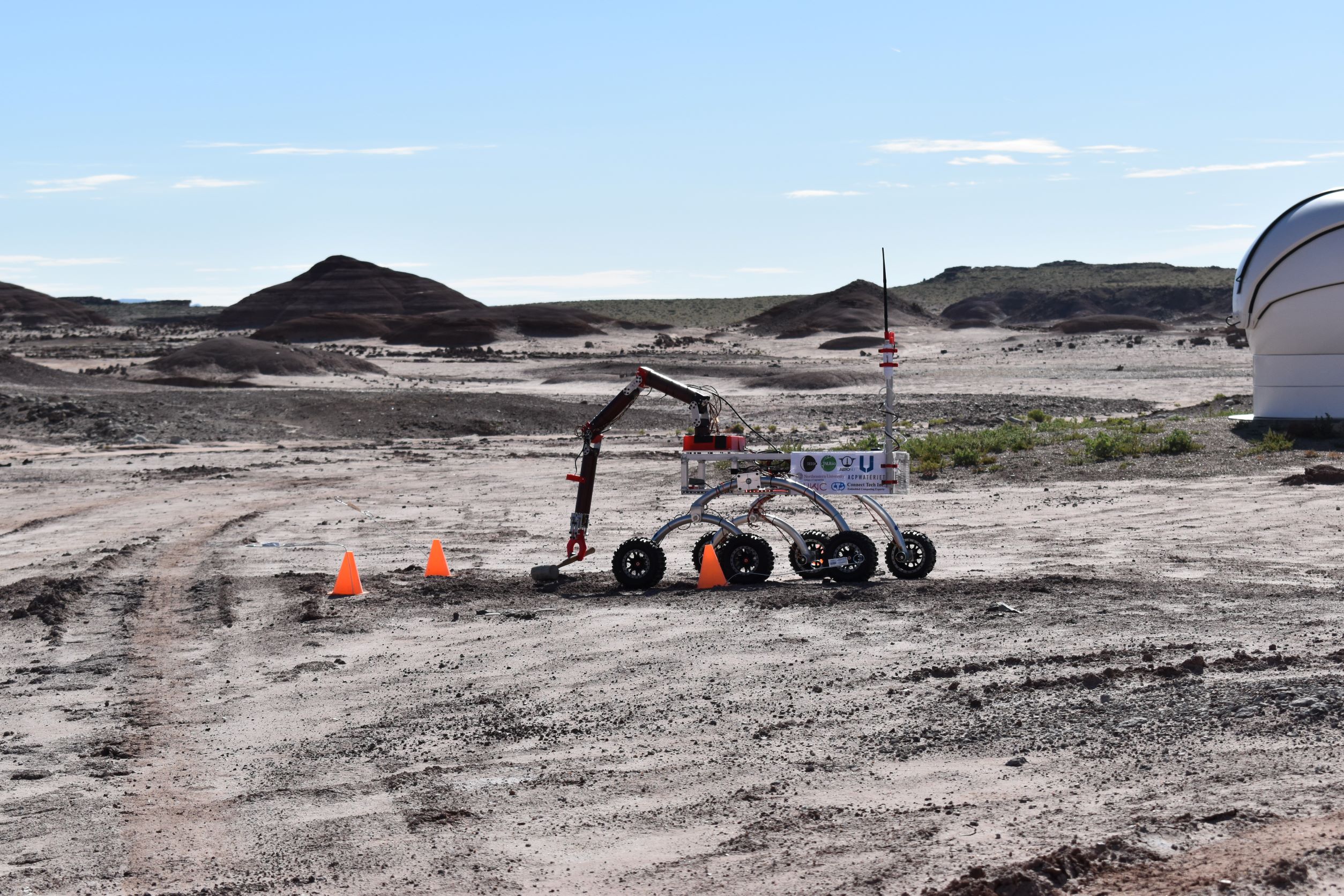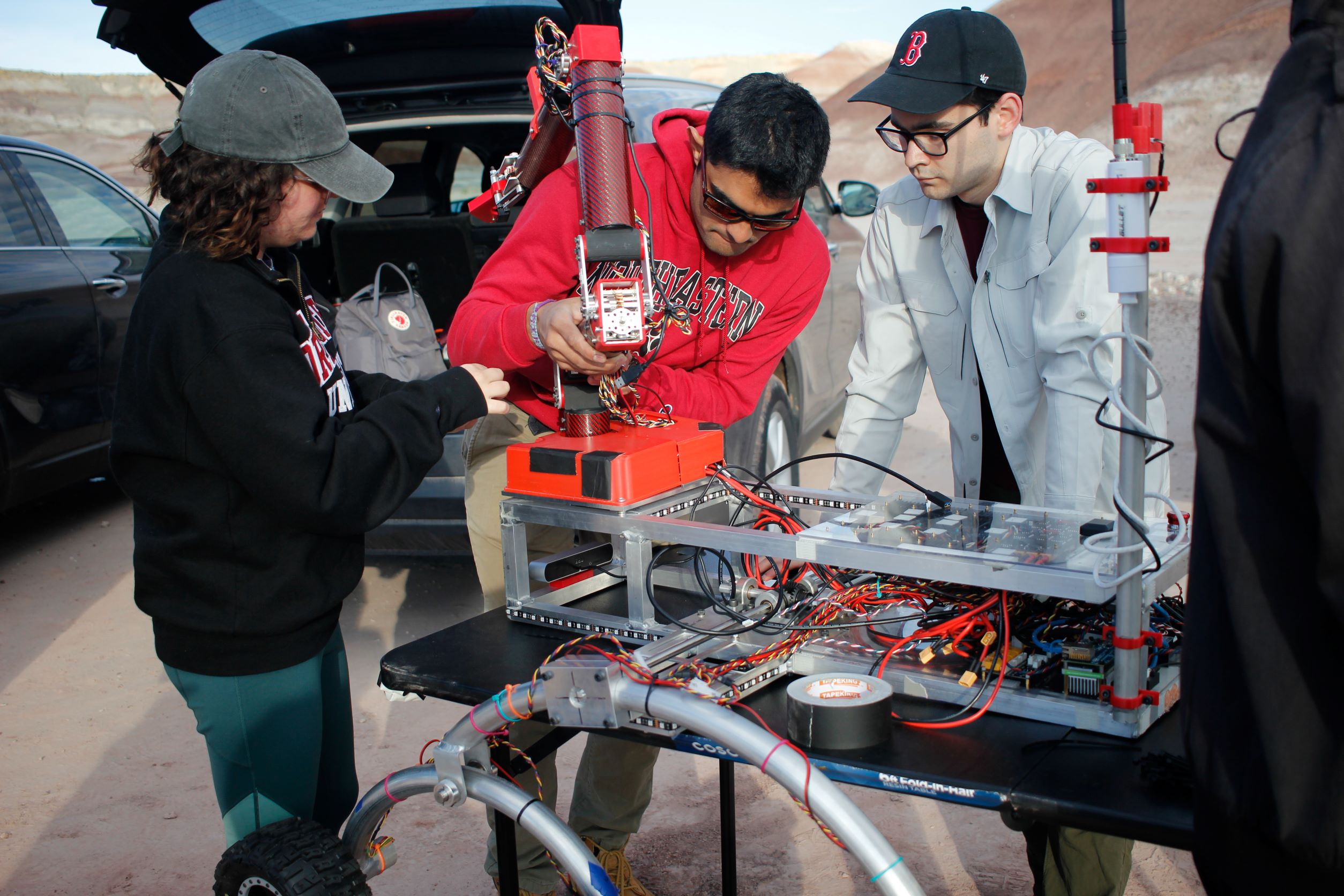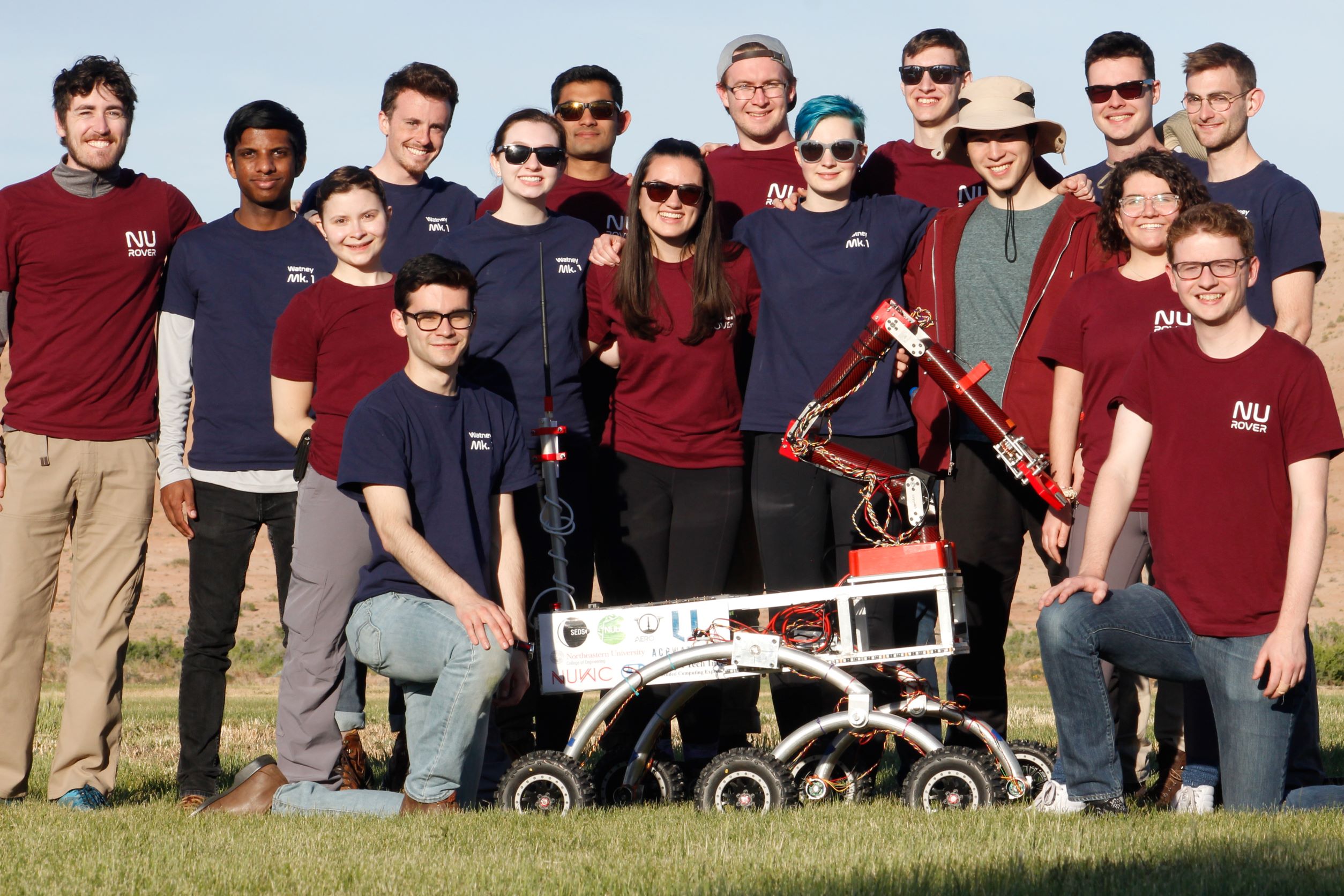NU Mars Rover Team
In August of 2018, a group of classmates, friends, and I founded a team to compete in the Mars Society's University Rover Competition. We grew the club to be nearly 30 members across engineering, science, and creative disciplines. I took over as the Systems Engineering Lead and Technical Lead of the team. I was responsible for managing requirements, integration of multiple subsystems, and managing communication between the the three main technical disciplines, mechanical, electrical, and software. I also worked on as a designer on the Manipulation subsystem and led the wireless communications test and development.

